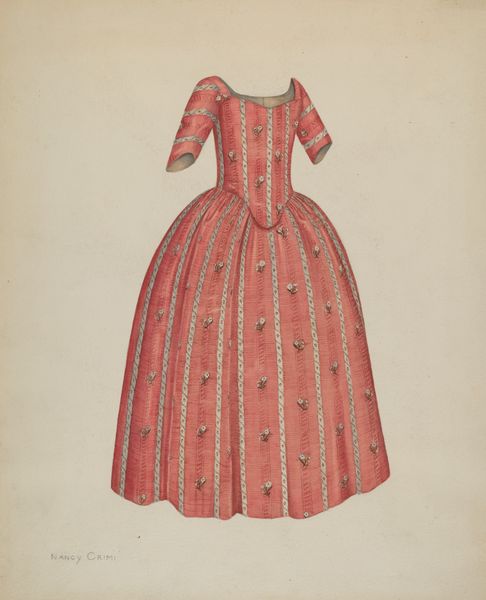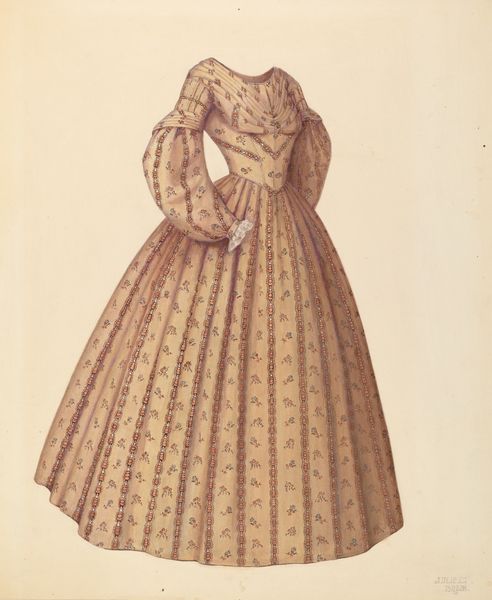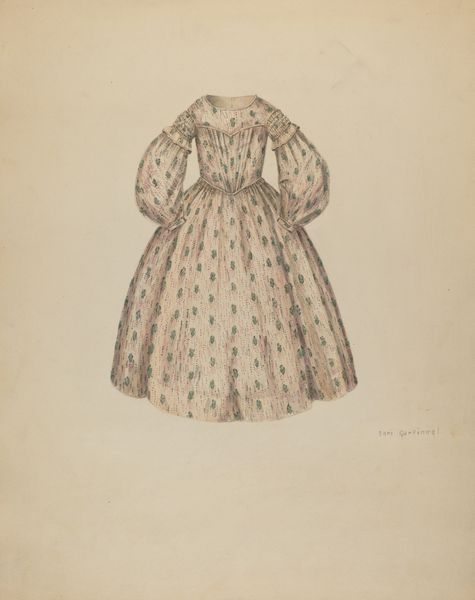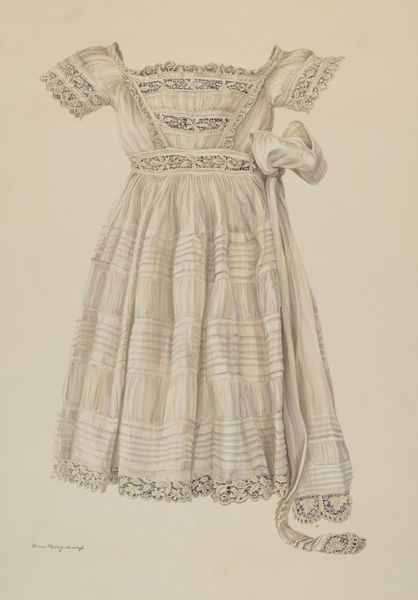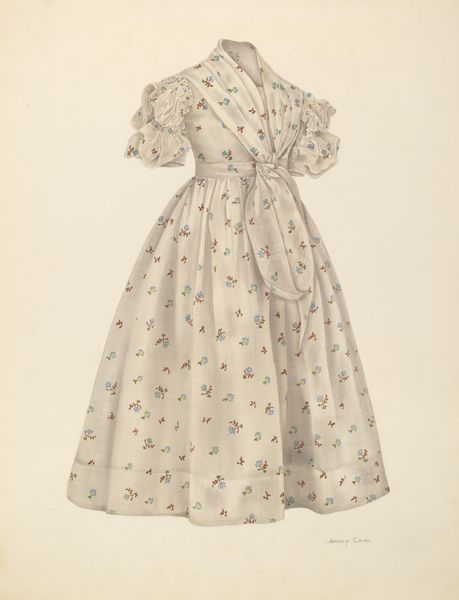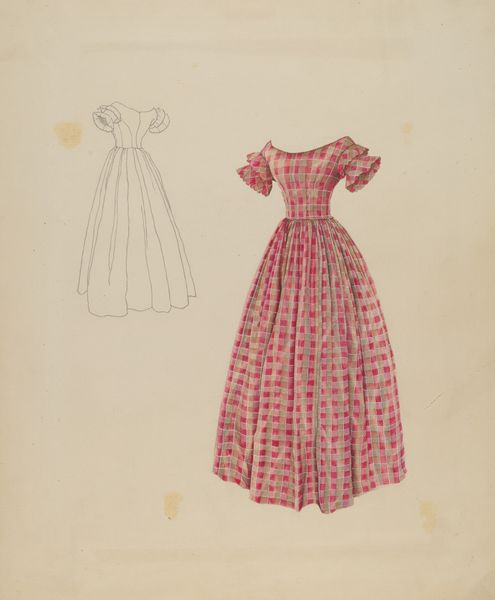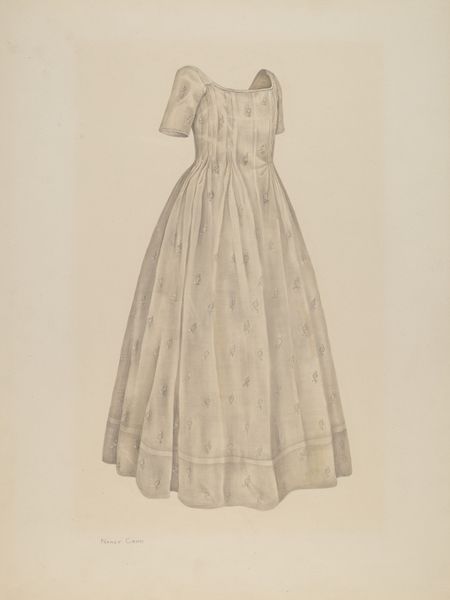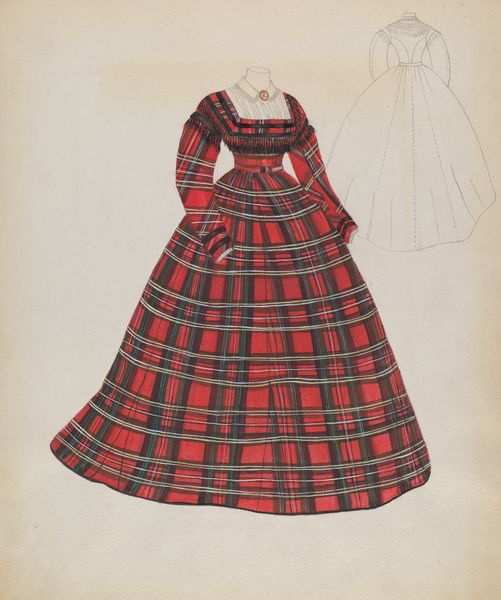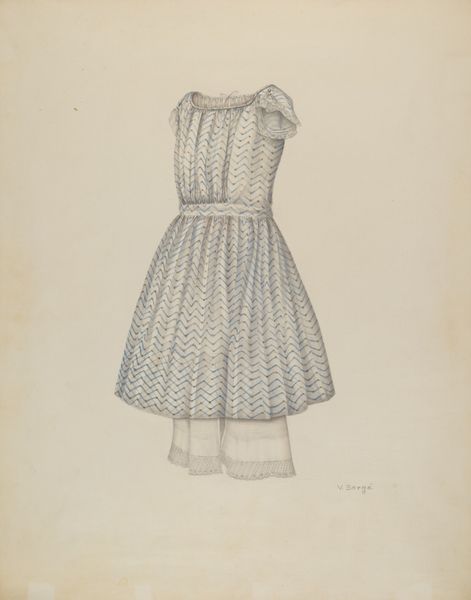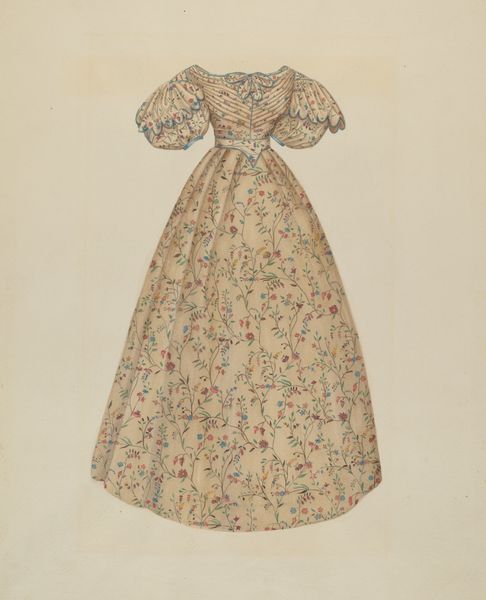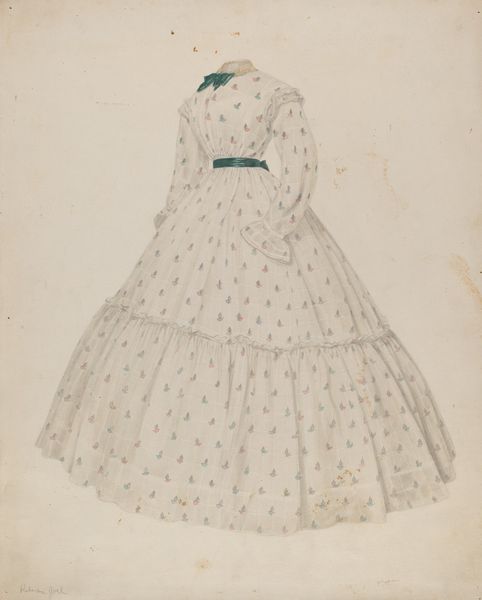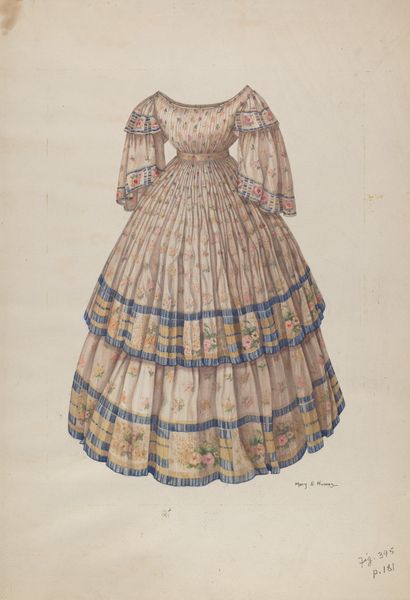
drawing, coloured-pencil, textile, paper, pencil
#
portrait
#
fashion design
#
drawing
#
underwear fashion design
#
coloured-pencil
#
fashion mockup
#
textile
#
collage layering style
#
fashion and textile design
#
paper
#
historical fashion
#
wearable design
#
pencil
#
clothing photo
#
fashion sketch
#
clothing design
Dimensions: overall: 45.5 x 36.7 cm (17 15/16 x 14 7/16 in.) Original IAD Object: 27" long; 20 1/2" wide
Copyright: National Gallery of Art: CC0 1.0
Curator: This work before us, dated circa 1941, is titled "Girl's Dress with Pantaloons" by Nancy Crimi. It's rendered in coloured pencil and pencil on paper. Editor: My first thought is 'quaint'. It has that wholesome, old-fashioned feel. The pink plaid pattern suggests a domestic fabric, something maybe hand-stitched? Curator: Indeed. Consider the timing – 1941. The war effort profoundly impacted the availability of materials. Were fabrics sourced locally, promoting regional economies, or was even this child's dress touched by rationing and resource scarcity? The visible pencil strokes reveal the making. Editor: I agree that it highlights societal changes; perhaps mass-produced garments were scarce at the time. Was this a piece intended to promote specific ideals? Did this sartorial design align with a particular set of political views on traditional upbringing and domestic values during this tumultuous time? Curator: It’s likely, especially as clothing has always been used as a medium for communicating one's allegiances or beliefs. Note also the paper itself, it’s thin and perhaps even salvaged. The pantaloons, the lace trimming. What kind of labor was involved? Was it family work, reflecting specific socio-economic realities, or more commercial output? Editor: The fashion itself suggests an emphasis on modesty. Think about what the child's wardrobe was like. Dresses of the time show societal preferences in feminine dress through particular structural components or even ornamental selections; these things reinforce expected identities! I like considering how it reflects gendered roles being established within that period. Curator: Absolutely. Even in a seemingly simple garment, you see so much careful decision-making by considering both the textile choice as a process as well as production methods used. How does an article like this fit into the larger system within fashion design institutions – something produced perhaps as student exercise with limitations affecting technique and aesthetics, yet speaking volumes within their humble forms about larger social constructs affecting our culture during wartimes? Editor: Studying "Girl's Dress with Pantaloons" makes me feel both inspired, and challenged. There’s this gentle aesthetic here even given restrictions caused historically by widespread war issues involving textiles during World War 2; truly reflective work from this important historical juncture within Western countries that encourages reflective discussions nowadays around issues like gender conformity today while considering how resources affect cultural items.
Comments
No comments
Be the first to comment and join the conversation on the ultimate creative platform.
